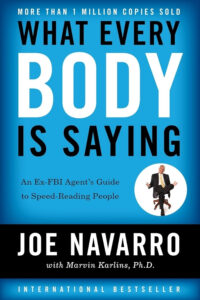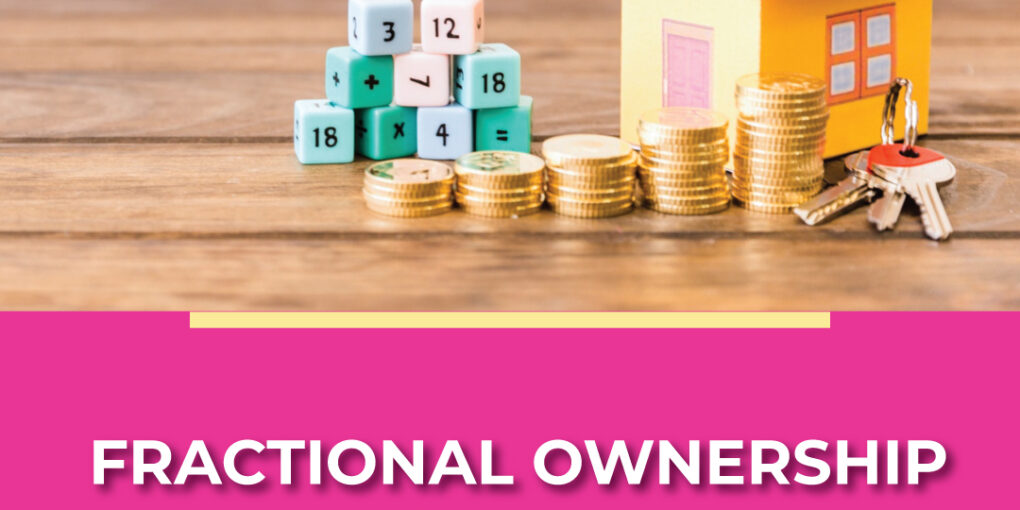Choose Fun And Bliss Through Life’s Toughest Moments With Monick Halm

The road to success does not have to be miserable. No one stops you from bringing even a bit of fun to your journey! Moneeka Sawyer joins best-selling author and REI mentor Monick Halm to discuss how she chooses blissfulness in her personal and professional lives, making her overall experience equally purposeful and fulfilling. She shares how “fun interruptions” make her life more exciting and get rid of the dullness. Moneeka also talks about her so-called “blissiplines” that let her prioritize joyfulness above anything else and how it can lead to greater success. If you want to experience bliss amid your toughest moments, this episode is for you.
—
Watch the episode here
Listen to the podcast here
About Monick Halm
 Monick Halm is the founder and CEO of Real Estate Investor Goddesses, a company dedicated to helping women create passive income streams and achieve financial freedom through real estate. With over 19 years of experience in syndications, buy-and-hold, and fix-and-flip investments, she has supported thousands of women in building wealth and designing lives they love—on their own terms.
Monick Halm is the founder and CEO of Real Estate Investor Goddesses, a company dedicated to helping women create passive income streams and achieve financial freedom through real estate. With over 19 years of experience in syndications, buy-and-hold, and fix-and-flip investments, she has supported thousands of women in building wealth and designing lives they love—on their own terms.
Her mission is to empower women to begin real estate investing in a way that feels aligned, confident, and grounded in feminine principles. Through live events, masterminds, coaching, and a vibrant sisterhood of supportive investors, Monick teaches women how to grow their wealth using her signature WEALTHY framework.
She offers both online and in-person real estate investing courses that are approachable, effective, and tailored to meet the needs of beginners and seasoned investors alike. Whether someone is looking to close their first deal or scale their portfolio, Monick provides the tools and guidance to take the next step with clarity and confidence.
A TEDx and keynote speaker, Monick is also the host of the Real Estate Investor Goddesses podcast and the author of two bestselling books. She has been recognized as an Enterprising Women of the Year Champion (2021) and honored by the Los Angeles Business Journal Women’s Council Awards in both 2017 and 2018. In addition, she is a licensed real estate agent.
Monick believes that women deserve to build wealth with joy, ease, and community—and she’s passionate about helping them do just that.
Choose Fun And Bliss Through Life’s Toughest Moments With Monick Halm
I was on a friend of mine’ show. It’s called Getting Real Live and the show is done by Monick Halm, who you have heard on this show many times. Anyways, the conversation was so good that I wanted to share it with you. Also, I just wanted to let that I am going to be at Monick’s upcoming summit. It’s called the 7-Figure Lifestyle Summit. It’s on September 4th and 5th. The topics that we’ll be covering are wealth expansion, conscious money, feminine embodiment and energetic alignment, sustainable aligned leadership, boundaries, visibility and self-expression and lifestyle design for high earning women.
Anyways, I thought it’s the perfect summit to talk about all of the things that are so important to our bliss. I’m honored to be a part of this summit and I would love for you to join me. If you want to come and hear me, Monick and the other amazing speakers, just go to BlissfulInvestor.com/Monick. I hope to see you there and I hope you enjoy this episode. Bye.
—
This is a show where we get vulnerable, honest and most importantly real about building wealth, creating impact and living life on your terms. In this episode, it’s a very special one. It’s not just an interview. It’s a real conversation. One that’s going to touch your heart and inspire you to choose fun and joy no matter what is going on in your business for your life and who better to invite to this conversation more than my soul sister and bliss, Moneeka Sawyer. Moneeka is known as the blissful millionaire and we’re chatting about how we can choose bliss, joy, fun even when things are tough and how that can lead to greater success. Moneeka, I am so excited to have this conversation with you. Welcome.
Me, too. Thank you. To let everybody know, I called Monick and I was like, “We need to talk about this because this is so good.” Thank you for being a yes and for sharing me with your audience, too.
Choosing Fun And Bliss In Life
Share with everybody why you thought this conversation was so important to have.
I have a show called Real Estate Investing for Women and we focus on being blissful investors. We want to build lots of wealth, massive wealth but we want to do it in a blissful way. We talked a lot about building wealth. It’s very similar to you, which is why we get along so well. The bliss piece is a very large part of what has made my business what it is. Over the last few years, there have been challenges. In 2023, I probably had the toughest business of my 32 years in real estate.
I was fortunate that it ended on December 29th of 2023, then I went into 2024 with the intention for recovery and like, “What’s next?” I also know that you had a very challenging year in 2023 for your own reasons in your business. I watched you as you and I stepped into 2024. Both of us went into the next phase.
I was so inspired by the choices that you made and how you helped me, too, to be more blissful even though this is the thing that I do, teach and practice. Still, you inspired me so much to try some new different things. I wanted to talk to you about those things that I have now added in my arsenal. You and I share together how this helped us to build our business further in the next year or two, that we’ve been going through.
Why Blissfulness Seem Unimportant
I’m so excited to have this conversation. I think I’ve shared some of what I’ve been doing around funds, specifically. My fund challenge on the show but let’s go deep because often, it’s reaching for joy or bliss or fun, especially in our culture, both in the US. It can seem frivolous and unimportant. It’s like, “No, you got to hustle. You got to grind. You got muscle through.” It’s like a Puritan work ethic. You have a struggle. It’s like the more in the struggle, the better. If it’s doing here, it’s not childish. It can be taboo.
It feels sometimes revolutionary to do that, to reach for pleasure, joy, and fun, especially when things are serious and difficult and challenging. That’s when it’s most important and most makes a difference. That’s also part of the feminine. It’s to move with pleasure as opposed to trying to muscle through, so let’s get deep. Let’s start.
I have practices that I have implemented into my life that integrate bliss and joy into every single day. No matter how bad the day is, I’ve got these practices. I walk the dog and watch his goofy little tail and allow it to make me laugh. I meditate. I make eye contact with my husband. I connect with women each day that inspire and uplift me. I watch inspiration videos first thing in the morning. I have got practices that are part of my life that keep me uplifted.
I call those bliss-ciplines.
That’s exactly right. Some of the other big bliss-ciplines that I’m privileged to be able to do is I go on great vacations with my husband. He and I have been to 70 countries together. We’ve only been married for 30 years but that’s our thing. We went out to have nice fine dining. There’s things that we enjoy together. There’s the day-to-day then there’s the big picture. What was interesting was that it happened in 2023, and there was a buildup. It wasn’t just 2023, but there was a thirteen-year build up to this ultimate climactic whatever heck happened here.
What I realized is that there were all of these things that I integrated into my life that kept me uplifted. Now when I was in a situation that was pulling me down, bothering me and challenging me. I continue to do all of those things and thank God because it kept me resourceful and creative. It helped me to get through the problems. I got to be a hero again and fix everything. We came out ahead. I made choices based on my integrity and my values, rather than what was easy.
I did all the right things that I had to do with my practices but the thing is I lost the fun and the joy. Even though there were all of these things that kept me uplifted, kept me going and creative. By the time I got to January of 2024, I was exhausted. I literally slept for two months. I would get up for meals. I didn’t even go for walks with my husband in the morning during that time. I went down and it was a privilege. It’s like I had set up my business that way. I knew that that was important.
As a bliss coach, that’s what I would tell myself to do, like, “Take the rest that you need.” It was a privilege and a gift that I could do that. When I woke up again and we entered life, I had my practices. I still smiled. I was still a joyful person, but I couldn’t find the fun. I couldn’t step back into the playfulness of life that makes everything feel so worthwhile. I did a lot of healthcare and went to a lot of coaches. Monick, you and I talked quite a lot. I did all of those things but in August, you and I had a conversation that completely changed everything for me.
You did what I call a fun interrupt where you just decided that you were going to have this intention that every day you were going to interrupt your day. This wasn’t a part of the plan. This was a program. This is what’s in your schedule. You were going to interrupt your day to insert fun. I love to do that. I get to be a part of that. We got to play together. We were doing that towards your birthday. I know and then you decided, “We’re just going to go and we’re going to do this for a year.” I know I don’t post very much. You started a Facebook group and I know you’ll talk about that.
Always interrupt your day to insert something fun. Share on XI don’t post very much, but I’m doing it every day and I’m inspired by you every day. I’ve been studying this for many years like this mindset of bliss and we all need a community to support us. We all need a community to inspire us and help us to see our blind spots. All of those things that I’m so grateful to you for being that for me.
I just want to talk about how you got there, what it was that inspired you to do that, to keep it going? It’s not easy. I will say trying to be playful and fun every day can be exhausting on its own. You’d say it’s another thing. It is odd but it’s so worth it and so fun. It gives you joy and a reason like, “What do I get to do now?” To be creative for fun. That was a long explanation but that’s what I want to hear. What inspired you to do that and to keep moving forward with that?
How Moneeka Started Her Life Of Bliss And Joy
This is March of 2024 and I am at the Enterprising Women Conference in Orlando. I brought my daughter because they also have a young enterprising woman focused on like high school girls and STEM, which she is. We’re sitting at a table with somebody else and I’m talking about the fact that somehow it came up that I was going to have a milestone birthday in October. That year was going to be this birthday and this lady and my daughter were like, “What are you going to do for fun? What are you going to do for your birthday? How are you going to celebrate it? What are you going to do?”
Before my previous birthday, I’m not saying the number because I’m just 35 forever. Let’s just say that. I did 40 days of outrageousness and I thought, “That was fun. Maybe I’ll have 50 days of fun.” I looked at the calendars and said, “August 13th, that’s when it starts. That’s 50 days before my October 1st birthday, so I’ll just do 50 days of fun.” I shared it on Facebook just so have that accountability around it and so it began. Every day, I was like, “What can I do for fun?” Some days, it would be late at night and I’m like, “I have to have my fun. What am I going to do?” The little things, big things or trips.
Some of them were silly and creative. It ran the gamut but every day, I did something fun then my birthday hit. I spent my birthday in Mexico with my husband and I realized, “This has been so profound doing this thing.” When I was focused on outrageousness the previous time, for some reason, it didn’t have the same vibrancy. It was great but there was something that happened this time with these 50-days. I fell deeply in love with my life. I found so much gratitude and I saw all the richness that I had, the people, my family, my friends and this beautiful world. It just turned me into the abundance and richness I have in my life.
It was very powerful and very profound. I decided that I didn’t want to stop, so I said, “I’m going to just do a whole year. We’re at 50, let’s go 365. Let’s do it.” I kept going. It’s day 232. I have continued on this journey and it’s been very powerful and very fun. At 50, I invited others to join me, if they wanted to. I said, “I’m going to be doing this. I think it’s awesome. Please come and join. We’re going to do monthly challenges to do each month or do the year. Do what you want.”
I have created a private Facebook group. It’s called Fabulous Fun Trip Around the Sun. If you find it, you can request to join and play along. All are welcome. The more people having fun in the world, the better. Like you, I had my bliss-ciplines. I had pleasure practicing but there is something different about fun.
Creating Fun Interruptions In Life
In 2024, early in the year I went to Africa and that’s one of my bliss-ciplines as we do these awesome trips. At least once a year, my husband and I have this big adventure. We went to Africa and I gave a talk soon after that. That Africa ruined my life because I had so much fun. I was so in tune with danger and I was doing something that was so close to my heart. It’s so aligned to who I am and I realized that I was not looking forward to going home. There wasn’t enough fun at home to attract me back.
I came home and I did this two months of sleeping because I was like, “Oh my gosh.” When you talk about fun, it’s so important because pleasure, our bliss-ciplines and staying up lifted, all of those things are ways of life. There is a way of being and showing up in the world. They help us in our relationships. They help us in our businesses. They make us who we are and happy to look at ourselves in the mirror. They’re all very good but they’re not fun on their own thing. It’s that fun that brings us, that makes us real like, gratitude is one of my bliss-ciplines.
Having the fun makes it so much more natural because you become more grateful for life when it is more fun. That’s just the way that it is. Fun is not a word that we talked about in our society like you were saying Monick. People think it’s frivolous. I’ve been called all kinds of interesting names like a hedonist. I don’t know if you’ve ever called that. I’m like, “Do what that means?”
What do I need to do for people to call me a hedonist?
For me, even though I call it bliss, for so long the focus was fun and I lost that. I didn’t lose my desire but I lost my capacity to search for that in a way. It got lost in the shuffle. It’s been so good to have you remind me, “That thing. That’s important, and that’s what makes us so excited to wake up in the morning. That’s what brings us back home when we’re away or inspires us to have a big adventure of life and do all the amazing things that we can and want to do, but having fun through all of it.

Fun: We can do amazing things by having fun through all of it.
It reminds me, because I’ve had several travels. I’ve gone to Mexico, Italy, and England during the past 232 days. I’ve had those trips as well and I think that is fun. It’s made and looked for. I’m being very conscious about, “I have to do something fun, specifically.” It’s helped me almost be like a tourist in my own city. As I’m looking for adventure or play, a couple of the days have been to do touristy things in LA. I went to the Mann’s Chinese Theater, and I did the hand prints in the bottom and foot print. I just went by myself and I did this super touristy LA thing.
I’ve done some other things like that. It’s helped me to see the familiar and unfamiliar ways. Sometimes, it’s even finding the fun just with my family. My kids just played this game high low buffalo, where it’s asking that, what’s a high that you’ve had? What’s a low or a challenge? What’s a buffalo? It’s something random or funny. We all went around and we shared. It got us deep. Teo, my son was like, “This was fun. We need to do this more. We need more conversations like this more.” It’s because I was looking for fun, it deepens and makes what you might take for granted. What I was often taking for granted, it’s helped me to mind it for what is special.
I had a conversation with another girlfriend of mine and she’s like, “Sometimes, I’ve been having a bad day. I look up and I see a rainbow and I’m like, ‘A rainbow.’” She goes back to her bad day but it uplifted her just a little bit. My thing to her was, “Kudos to you for looking for the rainbow.” There are a lot of people that were driving on the street having a bad day that didn’t look at the rainbow or didn’t allow themselves to get affected by the beauty or the pleasure that could provide. Having this intention of, “I’m going to look for things that are going to uplift me.”
The fun little things can add so much playfulness and newness to life. Share on XThat’s something that I do very naturally, but the intention to look for something that I could do that’s fun, I just took for granted that my life is fun. Sometimes, it’s not. That intention to look for it, to not take everything around us for granted and to look for the unexpected in what we think is expected. All of those fun little things, that new intention, can add so much playfulness, joy and newness to life.
How To Prioritize Fun During Tough Moments
I’m going to ask you because part of the conversation you said you wanted to have was about how and why we want to do this. One thing isn’t possible when life happens or when things seem to be falling apart. Some people are happy with what’s happening in government. Other people are thinking that the sky is falling and there’s so much angst.
Sometimes, it feels pretty revolutionary for me to be reaching for fun in the middle and to be posting as opposed to like, “This sky is falling,” but do you know what I did? I made a blanket for it.Anyway, this is what I’m posting and sharing about. It’s silly, but let’s talk about your thoughts, like reaching for the joy, the bliss or the fun when things are very tough.
There’s a lot that happens in the world that we can’t control. We can’t control the government and what’s going on. We just can’t. Things happen to us frequently that we can’t control. I live in Midtown Sacramento and there are homeless people everywhere. When I first moved here, every single time I would see one, it just completely broke my heart. I don’t want to say that I’ve desensitized to that because I never want to.
One of the things that I can say to myself is, I need to get rid of homelessness. That’s not something that I have any control over, but I can be kind to this person. I can donate to that group. There are things that I can do even in a situation that I have no control over. That’s true. When we look at fun, that’s the thing that we can do. No matter what is going on out there in the world, we can do something that is fun.

Fun: No matter what is going on out there in the world, we can do something fun.
Honestly, several times I’ve posted in your group and I felt guilty, Monick, like, “I’m having fun. This is a bad day and blah, blah, blah.” I’m having fun and I feel a little guilty. That’s the thing. There’s no reason to feel guilty because you’re making a choice to uplift your own life in a way that makes you more present in all the things that you can do to improve your life in the world. For me, reaching for fun is making the choice to do what you can do.
You’re all so uplifting others around you in the sharing of it and the energy you bring. I try to invite people to come play with me as much as possible. Sometimes, they do and sometimes they don’t and I’ll go out and have fun by myself. That’s all good, too. You always say, “Happy wife, happy life or Mama is not happy, nobody is happy.” I know that taking the time to make myself happy and tap into my own fun and pleasure, that helps others.
Hopefully, as I invite other people to have fun and it uplifts them and their lives. My kids are seeing my fun, especially the first 50 days. Allie was very helpful. She created a ChatGPT list of things we could do for fun. It’s like, “I have to do this fun thing.” Even though it wouldn’t have been her first instinct to go and do it, she’s like, “Alright, let’s go do your fun thing.” It allows us to spread joy. I also think that in tough times things are challenging. There’s like, where do we put our focus? We focus on, “This guy’s fun.” Everything is horrible or, as you said, we can focus on what we can control and what is around us that we can be grateful for.
We can focus on finding the fun and the play in all of it. They’re like despite it. When we are in a challenging time like reaching for fun, it retrains our brain. As you said, it’s like a fun interrupt. It’s a pattern interrupt that we can or I can find myself stuck in the negative spiral. It’s just like you’re stuck in it but when you do interrupt that pattern, that spiral and focus on something else, focus on what can I do for fun, play and on, I have all of these opportunities and all these wonderful things that are in my life. It completely transforms where you do and then I come back to my problem so much more creative and so much more resourceful. It gets me unstuck and able to think more clearly and creatively. I’ve found a lot of value in it.
Using Fun To Defeat Burnout
That’s part of what happened for me, which is why I went through such a big burnout. I hadn’t interjected enough fun. I had interjected what was needed but I didn’t take that extra step to find the fun even through all the drama of what was going wrong. It was fascinating for me when the magic happened through this year of trauma. Let’s just call it that. I had been pushing and pushing. I was doing it the masculine way.
I was pushing, active and solving problems. I was calling the right people and doing all of the things that needed to be done. Granted, they do need to be done but it was doing it in a very masculine pushing way. I was still doing my bliss-ciplines but I will say, that was not very fun for me, that whole process then I went on a vacation. I’m trying to remember what it was that I did. I think it was David. We went on a vacation for our wedding anniversary. That’s in August.
I remember thinking, “This isn’t working. I’m just going to let it go. I’m not going to think about it.” It’s off limits as far as being a topic at the table for dinner or for the whole weekend. We’re not talking about this. We’re not thinking about this. It was five days. We’re not going to do anything about this. I need to just let it go and we did that, which is very hard. When I came back, it was fascinating because I was so much more grounded, more relaxed and we had so much fun.
He was much more joyful and I started calling people again. Now, I was in a joyful place. When I called them, I was giggling. We had good conversations. It was like, “How are you doing?” Rather than, “What’s going on with this thing?” Even the opening of the conversations were kinder, funner and sweeter. Literally within a week, we had a solution to the problem. It still took five months to iron it out and make it work. The point that I’m trying to make, when we are having fun, when we allow ourselves to interrupt, as women, we also become much more attractive to the solution. I often say that I am the boots on the ground for God.
When we are joyful, we allow ourselves to do these fun interruptions. Share on XWe’re like, that pushing isn’t necessary for us women. We can attract what is good, right and possible solutions and then we can move with grace towards making those things happen or not. Weeding them out is going to be the next thing. They all can happen with that sense of attraction, which happens much more when a woman in this feeling of play and joy. We attract so much more. We’re able to affect other people through the conversation to start with, how are you, rather than what’s going on with that loan?
The way that we react and interact to people and to solutions and to possibilities is going to be completely different. Literally, everything turned around and was so counterintuitive. Do a weekend away where you don’t talk about it. You don’t have the intention that a solution will come. You don’t tell your subconscious mind to work on this. I did none of that stuff. I was just like, “I’m done. This is out of my brain, out of my space, and out of my conversation. It’s gone and I’m going to have fun.”
That fun interrupted and changed everything. What if I had been doing that the whole time? Might we have found a solution sooner? Maybe. Would I have gone through this incredible burnout that I went through? Probably not. I probably would have had a much easier time of it if I had focused on doing a few more of those fun interrupts.
Answering Rapid-Fire Questions
With the fun and pleasure, we are attracted to our solution. We can be repellent to it. We’re going to do a quick fire joy round then we’ll do our trinity. What’s one thing that always brings you joy?
My husband’s smile.
What’s your favorite bliss boosting morning ritual?
Going for a lovely walk to get coffee with my dog and my husband and having that time. It’s walking, going to coffee and relaxing. Taking some us time.
What’s a book or quote you live by?
There’s so many of them. I can’t come up with one right off the top of my head. Sorry.
There’s so many but since we’re talking about playing a game, I think for me, The Game of Life and How to Play It by Florence Scovel Shinn is one of my favorite books.
One of the chapters in my book Choose Bliss is, Play is the Way. Frequently, I will just repeat that to myself.
Get In Touch With Moneeka
I love that. I know you and I could talk for hours but we’re going to have to wrap up. Where can people find you, learn more about where you are and tap into your blissful wisdom? You did mention your book.
BlissfulInvestor.com is a place to go. You can be a blissful investor. You’ll get to find out about all my books there and I’ll be posting. I post my show there, what’s new and what’s coming up. All of that stuff will be there. You can also go to MoneekaSawyer.com. It’s easier to spell Blissful Investors.
It’s just like me in the sense that we each have very unique names.
It’s just weird.
We spell our names weirdly.
The other thing is, we have the same mission to help women to empower them. The other place that you can find me and you guys should check this out is at Monick’s Facebook group.
The Fabulous Fun Trip Around the Sun.
We can connect there, too.
Trinity: Moneeka’s Brag, Gratitude, And Desire
Join us. Have fun with us. Let’s close out with trinity, which is a brag, a gratitude and desire. What is one thing you are celebrating? What’s your brag?
I just completed another screenplay that I think is very good. I’m super excited about it. That’s my brag.
What’s one thing you’re grateful for?
I’m just grateful for this life. I worry about so little and have so much. I can’t even think of just one thing. I’m just so very grateful to be living this life.
Last but not least, what is one desire?
I want my screenplay to be picked up. I want to sell it. That’s my desire. If anybody reading, knows producers or whatever, contact me. I want to sell my screenplay.
Much better than you can ever imagine under grace and perfect place.
Thank you.
You are welcome. Thank you for being the impetus for this fun conversation and for sharing your energy, your wisdom and your bliss. That was such a powerful conversation. To our readers, I want you to remember this. You do not have to choose between success and joy. You can have both. In fact, they must come together because success without joy is not the best in my opinion. When you choose joy, bliss and fun, success comes much more effortlessly. If this episode spoke to your soul, please share it with a sister who needs it. Also, please subscribe so you’ll never miss another episode. Until next time, get real, stay real and let joy and fun be your compass. Bye.
Important Links
- Monick Halm on LinkedIn
- Monick Halm on Instagram
- Real Estate Investor Goddesses
- BlissfulInvestor.com/Monick
- Fabulous Fun Trip Around the Sun
- The Game of Life and How to Play It
- Choose Bliss
- Blissful Investor
Moneeka Sawyer is often described as one of the most blissful people you will ever meet. She has been investing in Real Estate for over 20 years, so has been through all the different cycles of the market. Still, she has turned $10,000 into over $5,000,000, working only 5-10 hours per MONTH with very little stress.
While building her multi-million dollar business, she has traveled to over 55 countries, dances every single day, supports causes that are important to her, and spends lots of time with her husband of over 20 years.
She is the international best-selling author of the multiple award-winning books “Choose Bliss: The Power and Practice of Joy and Contentment” and “Real Estate Investing for Women: Expert Conversations to Increase Wealth and Happiness the Blissful Way.”
Moneeka has been featured on stages including Carnegie Hall and Nasdaq, radio, podcasts such as Achieve Your Goals with Hal Elrod, and TV stations including ABC, CBS, FOX, and the CW, impacting over 150 million people.
Tune Into Your Intuition To Create Big Success With Laura Powers

As the world becomes more of a sprint and too much about the grind, we often forget to live out our purpose, appreciate our passions, and listen to the messages from our own bodies. Now, more than ever, we need to pause, take a breath, and tune into our intuition. Moneeka Sawyer sits down with celebrity psychic and writer Laura Powers who talks about elevating your life and unlocking your fullest potential by fully understanding your unique intuitive cues. She talks about letting your multi-faceted nature shine, creating a blissful mindset, and setting the most intentional goals that lead to huge successes.
—
Watch the episode here
Listen to the podcast here
About Laura Powers
 Laura is an entertainer, celebrity psychic, actress, model, host, singer, writer, and speaker. She is the host of the popular film and television podcast, “Behind the Scenes with Laura Powers,” and her top 100 mind-body-spirit show, “Healing Powers Podcast.”
Laura is an entertainer, celebrity psychic, actress, model, host, singer, writer, and speaker. She is the host of the popular film and television podcast, “Behind the Scenes with Laura Powers,” and her top 100 mind-body-spirit show, “Healing Powers Podcast.”
She is the author of 8 books and has more in process. She has magical adventures all over the world, meeting to connect with VIP clients for television, speaking, and other media appointments, and for the love of traveling.
Laura has been featured on several television channels and networks, including BuzzFeed, NBC, ABC, CBS, FOX, The CW, The Jet Set, Weakest Link, Beast Games, and many others. She was interviewed by Will Ferrell on his #1 podcast, “The Ron Burgundy Podcast.”
To learn more or connect with Laura, visit her website at www.healingpowers.net. You can also find her on Instagram @laurapowers44 or on X @thatlaurapowers.
Tune Into Your Intuition To Create Big Success With Laura Powers
Choosing A Blissful Life
Hello, ladies. It’s good to have you here. I’m inspired to chat with you about some personal things that are going on with me. A few weeks ago, my mom took a fall. She’s 87, and my dad is 94. I’m blessed to still have them with me. Many of you know that I moved to Sacramento so that I could be close to them in the later years of their lives, and also to help be a caretaker. That has become my primary thing. I’m here for them. Anyway, a few weeks ago, Mom took a fall and broke one of her feet. She broke three toes.
We were supposed to go on a family cruise. All of the family was getting together. We were going to go on a cruise. We’re supposed to be there right now, but because she was unstable, we decided to cancel the cruise. Two days later, she had a stroke. She had a stroke. First of all, thank you, God, for letting us be on land, for giving us preemptive warnings so we’re not on a cruise when this happens.
It has been such an interesting experience for me because you ladies know that part of what has happened for me is that over the last few years, I’ve had some difficult times in my business. I realized that my skill set around choosing bliss, although it has helped me to remain stable through my regular business stuff and through my regular life, when I hear a difficult point in my life around my business, I found that I was not as skilled as I had hoped to be.
I didn’t have the tools to handle the extraordinary circumstances. I had the tools that still allowed me to make good business decisions. I stayed creative. I solved my problems. I didn’t give up. I didn’t file for bankruptcy. I had all of those skills, but then I had a real crash and burn. Over the last year and a half after that experience, my journey has been to up level my bliss skillset so that when we’re now not just have a blissful life, but even in extraordinary circumstances, to be able to maintain that bliss for myself in a way that allows me to still be present, still be loving, still be resourceful, creative, and also still be able to be myself, and not to have external circumstances destroy my own inner peace.
Now here we are in another extraordinary circumstance. I love my mom passionately. Can you use that word for your mom? You know what I mean. I’m madly in love with my parents. To have this happening has been hard. What has been amazing is to watch myself in this space. I’ve been grounded. I’ve been loving. I haven’t lost my temper even once.
I’ve been able to make all sorts of good decisions. I’ve been able to negotiate with the nurses and the care team. When mom got transferred to rehab, I’ve been able to renegotiate all the food there, which is a thing, and her physical therapy and all of those things. I am so delighted with the up level of my skillset. I wanted to share that with you, ladies, not as a brag, but more to help you understand why I believe this is so important.
Why do I believe that this bliss piece is so important? It’s because when we’re in these situations that life throws at us, we get to show up as our best selves if we have those skills, at least some level of that skill set. As we uplevel that skill set, we can continue to be our very best selves and make the best decisions in our personal life, but also in our businesses. For instance, my mom was in the hospital, she had a stroke, and we had a water leak in one of my properties.
Water leaks are scary to me. I have a thing about those. It’s a big deal, but I have a weird, extraordinary response to those. In this particular case, I stayed completely grounded. I called my contractor, let him know what was going on with me, that I didn’t have any bandwidth. He handled the whole thing the same day. We had another situation with a garage door, a similar thing. I was in the hospital, I couldn’t handle it, I called a contractor, and he handled it.
The point is simply this. I was able to figure out exactly who to call, how to have a conversation with him so that I didn’t sound like I was freaked out. It allowed him to stay grounded so he could solve my problem, and everything got handled. This blissful mindset is such an important piece of running a successful, thriving business, but also running a successful, thriving life through it all, through the good and the bad.
Tapping Into Your Intuition
I wanted to share that with you, because I’m extremely happy with my own results. That doesn’t mean I’m not going to keep growing, but it’s exciting. The other piece that’s interesting about this last year and a half is that as I’ve been building my blissful mindset, one of the things that I realized is that one of the skills that I had lost touch with was my ability to tune into my intuition.
Most of my life for the last 30 years, as a real estate investor, I have been in tune with my intuition. I have an intuitive sense about which houses are going to be a fit for me. I have an intuitive sense about what kind of new tenant I want to have, and then attracting that tenant. When you meet tenants, they’re all nice. I do executive homes, and they’re all nice, but you have to have an intuitive sense about who is going to work and who is not and why, when it’s a good time to give up and ask them to leave, and when it’s a good time to work through and negotiate when issues are coming up.
My intuition has guided so much of my business and my life, and I feel like I lost track of that about a few years ago, and life became so much harder. I think that’s why I had so much difficulty with the issues that I was going through. A couple of years ago, I reconnected with a friend of mine who teaches all about how to live your life by intuition. She models it. Her life is so fluid, and she’s remarkably more successful than almost any other woman I know.
I respect her to the nth degree, and she runs her entire business and life based on her intuition. Because it has become such a big part of my life, I could tell you stories about what’s happened over the last year and a half. Can I tell you one story before I introduce Laura? Laura, give me a second. I want to tell one exciting story. I recently finished a screenplay for Choose Bliss. I finished it a year and a half ago.
I got an intuitive sense to hire somebody to write that screenplay. It was going to take me too long to go through that learning curve. I hired somebody, and that person I hired had an agent. It was a partnership. The agent has been marketing Choose Bliss, and we haven’t gotten a single bite. A few weeks ago, I was like, “This is important. I want this out. I tuned in to my intuition, and I got an intuition to listen to Abraham Hicks. One night, I listened from 10:00 at night to 3:00 in the morning.
Two days later, I got a call from a producer. Two days. How many screenplays get out there? Nobody knows where this is going to go. Ladies, if anybody is interested in a screenplay about living a blissful life, please let me know. I could use all the help I can get. How things change so quickly when you follow your intuition, you’re living in your bliss, and you take inspired action. Much of this guidance for me to live my life that way has been inspired, taught, and modeled by Laura. I want to bring Laura onto the show. Laura, how are you?
What an amazing introduction. Thank you so much. It’s always a pleasure to connect with you, Moneeka. I feel like you model this as well in your life. I feel like so much of intuition is also setting your intention for what kind of life you want to live. Making the intention of “I want a blissful life, I want a joyful life” is all so important.
So much of intuition is about setting your intention for the life you want to live. Share on XThank you. I feel like you get that. There are so many people out there that we can also choose who we work with, ladies. I am so grateful that I attract people like Laura who get that, that bliss is a big deal. It’s not just a big deal to me. It’s a big deal in life. It’s a big deal for our communities, for our businesses, for our children. It’s a big deal. It’s fun to work with people who get that. Thank you.
I feel like there’s a lot in our society that is consciously and unconsciously focused on suffering, and raising suffering up as a goal.
It’s valued.
It is like godliness through suffering. I completely disagree with that premise, but there’s so much we often have to unconsciously work through in order to allow ourselves to be in bliss. Sometimes we’ll hit a bliss cap. It’s like, “How much can I have? How much amazingness can I allow myself to have?” We sometimes have to keep working on that upper cap for ourselves to say, “Yes. I can have so much. I can take more.” There’s literally no end to it. I think it’s especially harder for women because women tend to be the caregivers, the ones who are focused on other people’s wants and needs.
Wanting to be a merger. Again, being a merger is valued.
Whether it’s a conscious desire or we’ve just modeled this, especially family patterns, for example. I love that you talk about this, and I think it’s important. I truly believe that a rising tide lifts all ships. The more that we have, the more that we receive. The more we include, the more we can pass it on. Our cups spilled over, and then other people were able to receive that. I love this conversation.

Intuition: The more you receive joy, the more you can pass it on to other people.
Also, I think it’s tied in with we can “work” in whatever we want. You have created a life that supports the lifestyle that you want through real estate and found a way to make it blissful. We can decide to do whatever we want. Now you’re doing screenwriting, which is amazing. I feel like the world is your oyster. We get to decide. We get to decide what kind of life we want to live, including what we do, as well as our bliss. Thank you for bringing this up as a topic.
Introducing Psychic-Medium Laura Powers
Thank you. Before we get too deep in here, I don’t have a bio for you. Did you want to tell my audience a little bit about your amazing self?
I do a lot of different things. I’m most known as a psychic medium. I have written several books on the psychic and spiritual realm. I’m an angel channeler. I can see past lives. I could see energy in a person’s body. I’m constantly using my intuition and my psychic abilities to navigate. That is also one of the things that I help people do. It’s to better learn and understand how to access their own intuition, because everyone has intuition.
Everyone has some form of psychic ability, whether they recognize that or not. I’m well-known as a psychic. I’m also an actress, a model, a writer, and a host. I’m a podcaster. I’ve been podcasting like you for a long time. I’ve been podcasting for about fourteen years. I do lots of different things based on what I feel intuitively to do, as well as what brings me joy. I do stand up. Last night I went and did some stand-up comedy, which is great.
It’s interesting. Depending on where you met me, you might have a different impression, because I do so many things. I also feel to say we are such diverse people within ourselves. We have so much to offer. We have so many facets, just like a jewel. A jewel does not have this one facet. We are like these beautiful, sparkling jewels, to honor that we can be multifaceted, we don’t have to be and do just one thing.
Embracing Your Multifaceted Self
I think as women, we already get that we are diamonds. I always say this, too. It’s so funny that you brought that up. We’re diamonds. There are all these different facets. When we think about that, we think about I’m a mom, I’m a daughter, I’m a wife, I’m a friend. We think of those as our facets. What’s true also is that we have a lot of those different things inside of us, lots of different interests.
I think in our world, we’re taught that you have to be one thing and do that well. Laura has been a podcaster for fourteen years, and I’ve been a podcaster for six. We’re good at that because we’ve done it for a long time, but it doesn’t mean that we don’t have the capacity to have other interests and pursue those things. Part of bliss for me is variance, like having some different things that I can focus on.
That’s not true for everybody, but I think it’s important that we recognize that it’s okay to have different interests, hobbies, in addition to all of those other things, all of those other roles that we play. Thank you so much for that, for mentioning the whole jewel thing, because I think you and I both have a lot of facets that we like to explore externally. Not just the roles, but the things that we enjoy doing out there in the world.
It’s funny. I didn’t know that you used that analogy before, but yes. I feel like that came in from spirit as a beautiful symbol that everyone can access. There are always these incredible opportunities, like whatever you seek is seeking you. Whatever the combination of things that you do, there are opportunities and connections that can be made. For example, years ago, I was a guest on Will Ferrell’s Ron Burgundy podcast.
I got invited on as a psychic, but one of the reasons they chose me is that I had been a podcaster for a long time. I had done improv. I did improv for years, like improv comedy. I was experienced in podcasting, interviews, improvising, and comedy. This was an opportunity that fit my skillset perfectly. Whatever it is that are all the things that you’re interested in, there are going to be opportunities like that for you that come in, and it’s like, “You’re the perfect fit for this,” even if it seems like a weird combination of things.
I’ve got one coming that’s exciting that I want to share. I have the opportunity on May 8th, my birthday, to dance with John Travolta.
That is so fun.
I know. The reason that I got that opportunity is that I talk about finance. I have a business partner who came through my podcast, where she talks about protecting wealth. She’s running a mastermind, and invited me over. It’s going to be on my birthday. I was like, “I don’t do business on my birthday. Sorry.” She’s like, “Would you like to dance with John?” I was like, “I’ll do that.” The interesting thing is that she gets to dance with him, but she’s a cripple.
She’s in a walker, and she’s bent over in half. I happen to be a choreographer. Where I play into this is that I am going to help John choreograph something for her and him. She may get on stage or not. If she doesn’t get on stage, I will do it, but because of my choreography background, because of my dance background, now I feel like I have the confidence to step in and help her and also support her on stage, and still be a beautiful addition to this dance with John.
It’s a skillset that I’ve had since I was three, which was just for fun. The way that I stay stable and grounded is to dance. Now here I am in this amazing situation that I would never be in. I wouldn’t have the confidence to be in it if I didn’t feel like I already had those skills that brought me so much joy.
I love that. You’re supporting your friends and helping her. You get to meet John Travolta. I love that. It’s so funny about John Travolta. Have you ever been to the Sphere in Las Vegas?
No, I haven’t.
When you come, we’ll have to go sometime. I’m bringing this up for something specific about John Travolta. I believe in following the whimsy, and I went to the Sphere with one of my VIP clients, and they have these talking android robots there, and you can ask them questions. We were doing a series of questions, like everyone was asking about something special on their birthday. People were having things brought up, like something to do with science or astronauts or whatever. It came to mind, and it was that the number one song on my birthday was Saturday Night Fever.
We are so similar in so many ways, Laura.
I didn’t even know that. I was like, “Of course, it was.”
I was having images in my mind of those two dancing, and me doing veil dancing as a backdrop behind them to add real beauty to the environment. Let’s see how it goes. We’ll see what they want. There are so many opportunities. I think building your many facets, also following your intuition, and also standing for your bliss. I don’t work on my birthday.
If I weren’t standing for my bliss, not that she doesn’t love me, but this may not have come up. Do you know what I mean? I would have been like, “No, I’m not coming. As much as I love you, I’m not going to do this on my birthday.” It’s standing for your bliss, standing for what is important to you, living your bliss, building the skillsets that feel yummy to you, and then going out there and letting your intuition direct your life.
Following Your Intuition At All Costs
One of the most challenging times is to follow your intuition when your intuition tells you to do something that logically doesn’t sound good. I’ve certainly had those times. My background is in poli sci. My Master’s in Poli Sci. I used to work in government and politics, a total of 180 from what I’m doing right now.
I wanted to step out of that world and plan. I got invited to a community meeting, and my logical mind was like, “I do not go to a community meeting. No, thank you.” The intuitive pull was so strong to go. I couldn’t ignore it. I went, and it ended up that one of the members of their board was someone I needed to connect with. She became my long-term client and connected me with other people who also became my long-term clients.
It was a wonderful thing about the relationship that was going to unfold from the meeting. It wasn’t about the community meeting, like whatever was being discussed at the meeting. It was leading me in a great direction. That’s one thing. It’s great to set our boundaries and our intentions, but like you said, also allow room for sometimes there’s something magical that’s going to come in. Being too rigid will stop the magic.
That’s true. If I had just been a deadpan, no, even though it’s against my values to do that, I was open. The other piece about that is understanding intuitively that things are coming. In other words, I understood that this is a person who loves me and has my best interests in mind. Even though I needed to set a boundary, there was this connection. There was also an intuitive sense that something good could happen if we continued the conversation.
That rigidity piece has come up for whatever reason, especially in the last couple of months, about how flexibility and that’s different than lack of boundaries. I think that can be a little confusing. Also, to trust if you have set your intentions and parameters to your angels and spirit guides or the universe, and you let them know this is what you want to experience. Something comes in that you’re like, “Is this outside of my boundary?” Yeah, be open and get more information like you did. You got more information that you were able to say, like, “Yes, I would like to do that.”
Trusting Your Feelings And Emotions
“I would love to do that. That sounds like a good idea.” Laura, could you talk a little bit about how we ladies and the ladies who are tuning in can get back in touch with that intuition? Maybe even like some exercises that we could do to make it into a game, to reconnect. As women, our intuition is so alive. Men have to work a little harder to get there. It’s one of those things, it’s one of our big resources, our one big advantage. Not one, but one of our many big advantages in the world, and specifically in real estate. Could you help us reconnect with that side of us?
One of the first fronts to look at is our bodies and our emotions. What are we feeling in our bodies? What do we feel emotionally in response to certain things? If you don’t mind, I’d love to talk about the event we went to.
I would love that. Yes, let’s do it.
Moneeka reached out to me. I love Moneeka and all the things she does. She reached out to me and invited me to this luncheon at the Beverly Hills Hilton, which was in honor of Paris Hilton and many other women. Moneeka was one of the women who was featured in the LA Magazine, LA Women Edition. When you reached out to me, Moneeka, I was in Egypt, and I hadn’t even figured out when I was coming back from overseas.
Logically, it would have made sense to be like, “I don’t know, I’m not sure. My plans yet or whatever.” The feeling was like, “Say yes, even if I didn’t understand the why.” The biggest part is stepping out of the logic and into the feeling. Business, in particular, is highly analytical, at least in terms of what we’re taught. The route to success and most of the successful people in business are highly intuitive.
That is a part of why they’re so successful. Leading into the feeling, trying to put the logic aside as much as we can, and then paying attention to what we feel in our bodies. I didn’t know too much about the event. The details I gave, I didn’t know too much about it when you invited me, but when you invited me, it felt exciting. That was what I leaned into. It was the feeling. Everything worked out beautifully.
The most successful people in business are highly intuitive. Share on XAnother friend and client of mine, who’s also an inspiring woman, ended up coming. Long story short, we ended up meeting Paris Hilton and had a short conversation. She’s lovely. It was also a wonderful room of women, very inspiring as a whole, very supportive. It’s exactly the room that I want to be in, which is loving, supportive, inspiring, and successful women who want to bring each other up.
The woman who did the intro, that’s literally what she said, “You either light someone up or you put their light out.” That was a room of people who were lighting each other up. Wonderful things happened. It was the right place to be. What got me to say yes was that feeling, like, “Yes, it felt fun and exciting.” Leaning into what we feel in our body is the first place that our intuition will show up for us. Alternatively, something can sound good, but if it sounds good and you feel dread or you feel heavy, that’s also telling you some information on the other side.
Paying Attention To Your Physical Cues
Talk to me a little bit more about those feelings so we can connect to those. You and I have practiced this for so long. I cannot even articulate what that is. Could you help my ladies understand it a little more?
First of all, pay attention to our bodies from a health perspective. My podcast is Healing Powers Podcast, and it’s a mind, body, spirit podcast. This has real importance. It’s not just for intuition, but also our own health, and paying attention to what our body is telling us. The first thing is paying attention and starting a daily practice of what our body is telling us. There’s the intuitive piece. There’s also listening to your body’s physical signs. Have you heard of the book, What Everybody Is Saying?
No, I haven’t.
It’s fascinating. It’s a book written by an author. I cannot recall his name, but he is a man who is hired by law enforcement agencies when they’re having a tough case. What he does is he goes in and analyzes specific body language, facial expressions. The book was very helpful for me to even decode my own responses to things sometimes.
Sometimes we’re so programmed intellectually that we’re cut off from ourselves, and we have to relearn. Even as children, “Go talk to the stranger,” even if our body says, “No.” “Go sit on Santa’s lap,” and you see all these pictures of kids crying. I’m like, if the kid doesn’t want to sit on the lap, I think you should honor that, “I don’t want to do that. That’s a strange man. I don’t know that person.”
We have to reprogram. One of the messages in the book is about, for example, how we point our feet towards wherever we want to go. If we’re talking to someone and our feet are pointed away, that’s a sign of not wanting to connect with that person for some reason. A lot of this is a practice of paying attention to our body’s physical cues and learning to feel into our body’s emotions.
This is a practice because so many people are so cut off that they don’t even honestly know what they feel. They’re so used to basing on someone else. The other thing that’s very helpful for this is meditation and reacquainting yourself with your own body and your sense of self and what you’re feeling in the moment. Usually, you’ll get a sense. If you don’t, then just sit with it, breathing, and allowing whatever you feel to come forward, and not just to feel like you have to hurry with it.
It’s interesting when you talk about your body. Oftentimes, my no response comes in my belly, and it feels like a belly ache. I need to be careful to ask myself not right after I’ve eaten food. If I’m having a belly ache after I’ve eaten, it might be because of what I ate, or that I ate too fast, or that I didn’t get enough water, or too much.
There are a lot of reasons. It’s that exact same feeling. I’ve got to wait for a couple of hours after I’ve eaten before I ask. If I’m at dinner having a conversation, I need to make a decision, and I’m getting that bellyache, I’ll say, “I will get back to you,” because I know whatever I’m feeling right now is not true. I’m digesting food. That access point isn’t available to me. It’s altered at that moment. There’s that.
I’m getting an idea that is worth listening to. I will feel a tingling, like there are stars, like I’m an angel, like there are stars right on the top of my hair. If I’m too tired, it will put me to sleep because it’s also the way that I relax. Just know how your body operates. Laura, I’ve been doing this intuitively. I didn’t even realize I was doing it until you said that. I know because I’m paying attention to what my body does, and that my messages come in as similar sensations, and there are certain times when I’m able to decipher those messages better. It gives me access to much more information if I’m aware of that.
That’s why I said it’s like an art of learning your body and your responses and figuring out how to deduce for yourself. Sometimes it’s an immediate yes or no. We’ve all had that where it’s like, “No. Hard pass.” Other times, we have to step with something, and that’s okay. One of the great ways that I get insight and clarity is when I’m driving, not in LA traffic or something, but when I’m driving and I can zen out, still be safe and everything, but I don’t need my full focus to drive on a pretty straightforward road. You still have some mental capacity to focus on other things. That’s one of the ways that when you process something, I’ll go and I’ll drive, or sometimes in the bath. Water is very helpful for me.
For me, it’s the shower.
Just learning those things. If you’re like, “I’m not sure,” then doing one of those things that helps you get into your core intuitive energy, and then honor that, and then trust yourself, too. A lot of the challenge with honoring your intuition is a lack of self-trust and questioning, “Am I going to make the mistake?” That lack of trust in ourselves can end up with us spinning because we’re always afraid to make the wrong choice. Also, I feel that as we get better at manifesting, the whole world is magic. It’s not about a right choice versus a wrong choice. It’s about what we want to experience, and also knowing there are so many ways we can call in the kinds of experiences that we want to experience.

Intuition: Honoring your intuition can be challenging because of your lack of self-trust. We may end up spinning because of our fear of making the wrong choices.
It’s not 100%, but in many cases, there’s no real wrong choice. It’s not like any choice that you make is going to make you die, in most cases, or get sick, or whatever. The world is a much safer place than we give it credit for. As we’re making those decisions also have the intention that I am safe, I am held, everything is going to work out for me. Setting out that intention as you’re making a decision frees you then to tune more into what’s right and what’s wrong for you, rather than making decisions based on fear or perceptions that are not true.
I want to talk a little bit about how sometimes our body’s messages can be a bit confusing, specifically as it relates to stress, anxiety, and excitement. Let’s say you’re stepping into something new for you. Public speaking, for example, can draw a lot of fear in people. I learned this, and it was resonant that the body’s response to excitement and stress, or anxiety is the same. What if you’re about to step on a stage and you’re suddenly like, “I feel so much anxiety,” but what if it’s just excitement?
Much of this is within the safety realm. It’s probably going to be pretty safe for you on a physical level to step onto that stage. It’s more about your intellectual or emotional fears in that moment. I’m safe, “I’m so excited.” Instead of “I’m stressed about this. This is so exciting. This feeling in my tummy and my palms is excitement. I’m excited about this.” We can start to reprogram the story we’re telling ourselves about what’s going on in that moment.
The Importance Of Focusing On Service
It is also interesting to understand that everybody else out there is having similar feelings. I have a big speaking engagement coming up, and I have to confess, I’m scared. I have been a good speaker in the past, but I was an internationally known dancer, too. Every single time, I would go on stage. I’d be in the back and ready to go on stage. I would forget my performance.
I would forget the choreography. I was completely overwhelmed with butterflies in my stomach. The music would start, and my body would start to move. I hear this over and over again that professional speakers will still get butterflies in their stomach and stuff like that. It’s also like we’ve been talking about getting to know your body. That’s not a “Stop, don’t do that” response. That’s something big and exciting that’s about to happen, even though it’s scary for you. It’s okay that it’s scary for you. You’re going to be safe in this situation.
A lot of this is also getting to know who you are and honoring that, not allowing other people to dictate how you should be feeling or tell you what you will be feeling, and then you beat yourself up because you’re not doing that. Tell you how to tap into your intuition when in fact that doesn’t work for you. Like learning who you are and what makes you tick, and how you operate. All of those things are going to help you tap into what’s best for you, what your intuitive senses are trying to say to you.
There are little tricks or shortcuts we can sometimes learn that help us. One of the ones that helped me, especially in the beginning of putting myself out there in this new way. Again, Master’s in Poli Sci, government and politics, working in the psychic spiritual realm. That was like getting a sex change or something completely different with how I was orienting with the world, as well as my self-identity, which felt like such a massive shift.
They experienced a lot of what I would say persecution fears, “Are people going to attack me and tell me I’m crazy,” or think “I’m a horrible, stupid person,” whatever. There was a lot of mental garbage I had to work through. One of the things I learned from psychic training that was very helpful for me in those moments was the phrase, “When you get nervous, focus on service.” Redirecting the focus from my ego, fear, whatever is going on in that moment, to like, “What am I trying to do here? What am I trying to accomplish?”
When you get nervous, focus on service. Share on XOne of my big drivers in talking about all this stuff is helping others heal because I went through a big spiritual and physical healing journey, and I saw the tools that helped me, and I wanted others not to struggle as I had struggled as much. A strong drive for me, and my whole path was like, “I want to help. I don’t want people to be in a struggle.” When I focus on that and the information I’m trying to share, instead of all the mental stuff that helped me to be able to move through and not get stuck in this mental panic that can end up in a freeze state.
I love that. Focus on service. When you get nervous, focus on service.
It’s so easy to remember.
I had a girlfriend. I was going to another event in LA to talk about my screenplay. I was so scared because I’m a Northern California girl. I’m pretty simple. I don’t get the business. I don’t know anything. I have this message that’s important to me. I feel like if we do it in a movie, it’s going to impact more of the world. My book could only do so much. My voice can only do so much, but a movie could make a huge impact. The message is so important that I want to do this, and I know nothing.
I remember I was going to be walking into this room, and I was with another girlfriend. It was the LA Magazine photo shoot for the magazine, the article, and everything that we did, the event that you and I went to. I knew I was going to be meeting all these important women at this photo shoot, and the photographer, the owner of the magazine, and so many important people. A girlfriend of mine said, “Moneeka, carry around a little bliss ball and share it with people.”
I love that.
She got that bliss is my thing, I don’t know if you noticed this, the way that I was leading even the other day when we were at this event is there’s this heart forward feeling like I’m literally imagining I’m carrying a ball right in front of my heart and I’m walking up to people to try to share my little ball of bliss. That too is when you’re nervous, be of service. I want to share the joy. I want to model that joy. Each of us can do that.
Much of this is redirecting the focus. Where do I want my focus to be? Do I want it to be panic? No. It’s sharing bliss, and meaning bliss. The good thing is that the more we do that, the easier it gets to do that. My early childhood history is with a lot of physical trauma and abuse. That was where I was coming from. There was a lot of fear and anxiety because of my circumstances. I did have to do a lot of reprogramming. Now, that’s more my de facto. It is that blissful, joyful state.
We’re humans. It’s not like we’re always going to be in this sort of high-elation feeling. What we can do is that our standard baseline is way higher, so I feel like we can keep elevating that. What you talked about in your intro, which is even when things happen that could feel challenging, we don’t have to go so low in those moments. It’s natural to feel emotions. We’re human, of course. Also, we don’t have to get stuck in the troughs.
Intuition is our inner compass that helps us receive and experience joy and the magic of life. Share on XThat’s right. We don’t have to live there.
Knowing that and that we have the tools to get ourselves back up so we don’t have to be stuck in that energy is a game-changer. It’s life-changing.
Setting Intentions And Choosing Your Circles
I know that you are almost out of time. Is there anything that you wanted to share with the ladies before we sign off? I’ve loved this conversation so far.
Me too. I feel like there are so many wonderful gems. I would say I’m such a believer in manifesting and setting intentions. Whatever feels fun and exciting, I would like to experience that in my life. Set that intention, put it out there to the universe, and then pay attention to the messages that come forward for you, the invitations, the signs.
I believe our intuition is our inner compass to help us receive and experience joy and the magic of life. In order to fully receive what we want, we need to set that navigation system. A lot of people make the mistake of being like, “Whatever is for the highest good.” That’s a great streamer, but at the same time, there’s so much out there. There are so many things that could happen.
Getting clarity and setting intention, like, “I would love to have a screenplay to produce, I would love to go to Bali, I want to dance with John Travolta, or I want to connect with so-and-so.” Whatever those things are, put them out there, and then pay attention to your intuition as things start to shift, because our angels and spirit guides are listening to us. As we set these intentions or have these goals or even whimsical ideas of something that would be fun, different channels open up for us to help those things come into reality.
I agree with you on that. This has been so lovely. It’s always so wonderful to connect with you, Laura. Thank you so much for coming on the show.
You are so welcome. There’s one other thing that I was meaning to say, and this is about your circle and making sure that you’re connecting with those who have the same intentions and love, and support you. If you’re around a lot of naysayers, negative Nellies, or people who rain on the parade all the time, that’s going to be harder for you to keep your energy up. I think we’re in the process of that. When I look at my circle, and I was first learning about all this, I was definitely in a desire to help to the point where I was even unconsciously in a martyr pattern, even with energy. Paying attention to like, “Do the people in your life lift you up? Do they support you? Do they believe in you?” These kinds of things are also helpful in helping you manifest those dreams into reality.

Intuition: Connect with people who have the same intentions as you.
They talk about how you become the top five people that you hang out with, the people that you spend the most time with. It’s not a trite little saying. It’s true. We become who we hang out with because we take on each other’s energies and beliefs. No matter how strong you feel you are in your beliefs, you are going to take on some of this other stuff from the people you hang out with by osmosis. It’s easier to stay uplifted if the people that you hang out with are also uplifting.
It doesn’t mean that every conversation is happy. It doesn’t mean that we don’t have bad days. It doesn’t mean that we don’t dump on each other or vent, but it does mean that most of the time, we are uplifting to one another. When someone is having an amazing experience, the other people are happy for them. They want that experience for you. It’s like that. It’s not that you have to be happy and joyful all the time. That’s not real. That’s not how life works, but you want to be around people who are going to uplift you in a way, even in those down times.
They are happy for your success, too. Some people can be your friend when you’re having a hard time, but don’t know how to be your friend when you’re successful. I remember that moment when I divorced my ex-husband, and I had health issues. I was like at a low point at that time. Some people were there for me then, but when I got out of it, they didn’t know how to interface with me when I was good. It was a strange realization. What we want is the people who can be there and support us and understand, but also support our wins.
Episode Wrap-up And Closing Words
Celebrate with us, play with us, and bring us sheer joy. Thank you so much.
It was my pleasure. Moneeka, thank you so much for modeling this because we all need to see this and be reminded of this. I want everyone to know you can be successful. You can have joy. You can have passion. You can have all the things. You do not have to choose. I think you embody that very well.
Thank you. I believe the same about you, which is why I want to share so much of what I’m experiencing in life with you. Thank you for that.
It’s my pleasure.
Ladies, always remember. You can choose bliss. Bliss is your birthright. Choose to live your bliss every single day. I’ll see you soon. Bye.
Important Links
- Laura Powers
- Laura Powers on LinkedIn
- Laura Powers on Instagram
- Laura Powers on Facebook
- Laura Powers on X
- Laura Powers on YouTube
- Healing Powers Podcast
- What Everybody Is Saying?
Moneeka Sawyer is often described as one of the most blissful people you will ever meet. She has been investing in Real Estate for over 20 years, so has been through all the different cycles of the market. Still, she has turned $10,000 into over $5,000,000, working only 5-10 hours per MONTH with very little stress.
While building her multi-million dollar business, she has traveled to over 55 countries, dances every single day, supports causes that are important to her, and spends lots of time with her husband of over 20 years.
She is the international best-selling author of the multiple award-winning books “Choose Bliss: The Power and Practice of Joy and Contentment” and “Real Estate Investing for Women: Expert Conversations to Increase Wealth and Happiness the Blissful Way.”
Moneeka has been featured on stages including Carnegie Hall and Nasdaq, radio, podcasts such as Achieve Your Goals with Hal Elrod, and TV stations including ABC, CBS, FOX, and the CW, impacting over 150 million people.
Setting Up Your 2025 for Success!
Moneeka Sawyer is often described as one of the most blissful people you will ever meet. She has been investing in Real Estate for over 20 years, so has been through all the different cycles of the market. Still, she has turned $10,000 into over $5,000,000, working only 5-10 hours per MONTH with very little stress.
While building her multi-million dollar business, she has traveled to over 55 countries, dances every single day, supports causes that are important to her, and spends lots of time with her husband of over 20 years.
She is the international best-selling author of the multiple award-winning books “Choose Bliss: The Power and Practice of Joy and Contentment” and “Real Estate Investing for Women: Expert Conversations to Increase Wealth and Happiness the Blissful Way.”
Moneeka has been featured on stages including Carnegie Hall and Nasdaq, radio, podcasts such as Achieve Your Goals with Hal Elrod, and TV stations including ABC, CBS, FOX, and the CW, impacting over 150 million people.
Wholesaling to Start Your REI Journey
Moneeka Sawyer is often described as one of the most blissful people you will ever meet. She has been investing in Real Estate for over 20 years, so has been through all the different cycles of the market. Still, she has turned $10,000 into over $5,000,000, working only 5-10 hours per MONTH with very little stress.
While building her multi-million dollar business, she has traveled to over 55 countries, dances every single day, supports causes that are important to her, and spends lots of time with her husband of over 20 years.
She is the international best-selling author of the multiple award-winning books “Choose Bliss: The Power and Practice of Joy and Contentment” and “Real Estate Investing for Women: Expert Conversations to Increase Wealth and Happiness the Blissful Way.”
Moneeka has been featured on stages including Carnegie Hall and Nasdaq, radio, podcasts such as Achieve Your Goals with Hal Elrod, and TV stations including ABC, CBS, FOX, and the CW, impacting over 150 million people.
Fractional Ownership and Rental Income Sharing Investing
Moneeka Sawyer is often described as one of the most blissful people you will ever meet. She has been investing in Real Estate for over 20 years, so has been through all the different cycles of the market. Still, she has turned $10,000 into over $5,000,000, working only 5-10 hours per MONTH with very little stress.
While building her multi-million dollar business, she has traveled to over 55 countries, dances every single day, supports causes that are important to her, and spends lots of time with her husband of over 20 years.
She is the international best-selling author of the multiple award-winning books “Choose Bliss: The Power and Practice of Joy and Contentment” and “Real Estate Investing for Women: Expert Conversations to Increase Wealth and Happiness the Blissful Way.”
Moneeka has been featured on stages including Carnegie Hall and Nasdaq, radio, podcasts such as Achieve Your Goals with Hal Elrod, and TV stations including ABC, CBS, FOX, and the CW, impacting over 150 million people.

















